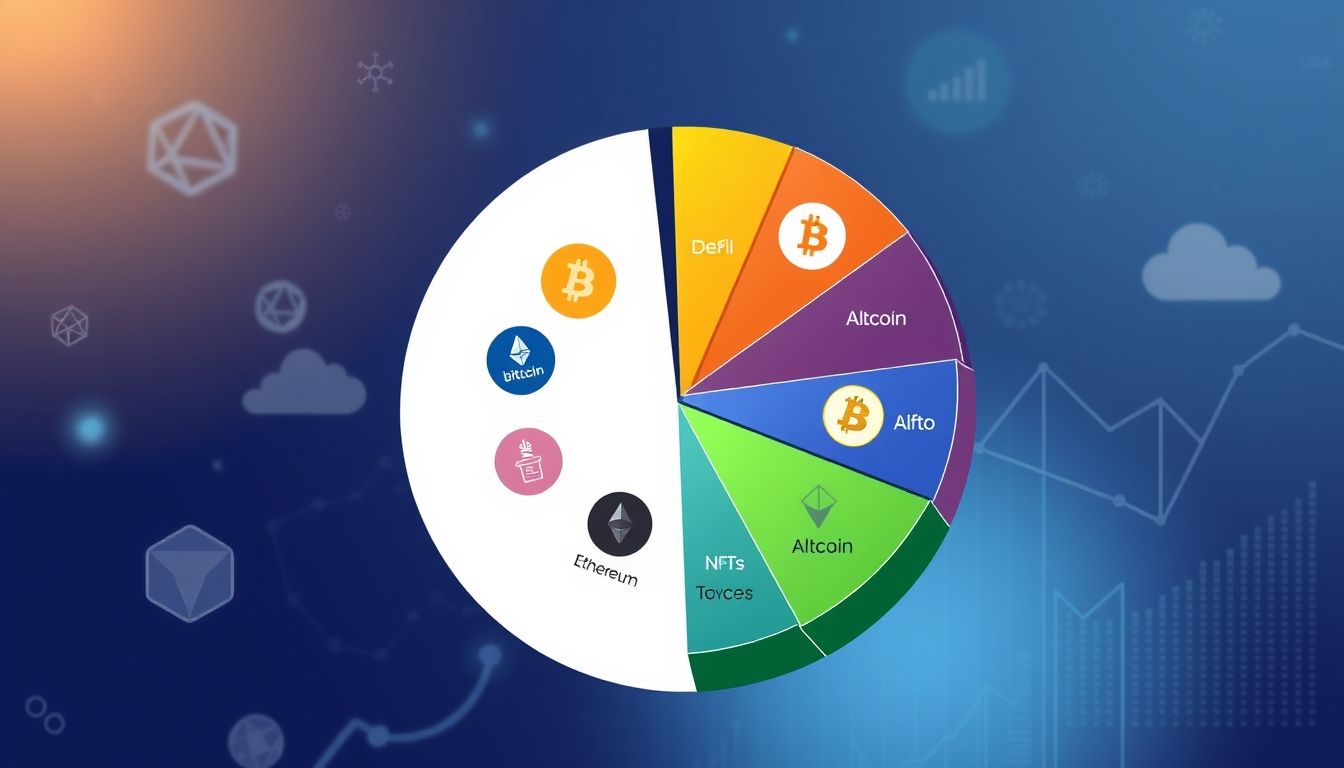Cryptocurrency and Web 3.0: The Future of Money and Decentralized Internet
The financial technology (FinTech) sector is experiencing rapid advancements, with cryptocurrencies and the next generation of the internet, known as Web 3.0, at the forefront. These technologies are not just fleeting trends but represent a radical shift in how we interact with money and the internet. Let's delve into this exciting world and explore its potential and challenges.
1. What are Cryptocurrencies?
Cryptocurrencies are digital or virtual assets that rely on cryptography to secure transactions and control the creation of new units. Cryptocurrencies differ from traditional currencies (fiat currencies) issued and supported by central governments.
- Cryptocurrencies: Such as Bitcoin and Ethereum, rely on decentralized blockchain technology.
- Stablecoins: Designed to maintain a stable value pegged to another asset, such as the US dollar.
- Central Bank Digital Currencies (CBDCs): Digital currencies issued by central banks, such as the digital yuan in China.
2. Blockchain Technology: The Backbone of Cryptocurrencies
Blockchain is a decentralized and distributed digital ledger that records all transactions in a secure and transparent manner. Each "block" in the blockchain contains transaction data and is linked to the previous block, making it impossible to change or forge the data.
Benefits of Blockchain:
- Decentralization: No central authority controls the network.
- Security: Strong encryption makes it difficult to hack the blockchain.
- Transparency: Anyone can view the transaction history (while maintaining privacy).
- Efficiency: Blockchain can speed up transactions and reduce costs.
3. Web 3.0: The Decentralized Internet
Web 3.0 is the next generation of the internet, which aims to create a decentralized, smarter, and more private network. Web 3.0 relies on technologies such as blockchain, artificial intelligence, and the Internet of Things (IoT).
Features of Web 3.0:
- Decentralization: Control of data returns to users instead of large corporations.
- Artificial Intelligence: Using AI to improve user experience and provide personalized services.
- Augmented and Virtual Reality: Integrating augmented and virtual reality into the internet experience.
- Linked Data: Linking data from different sources to create a deeper understanding of the world.
4. How do Cryptocurrencies Integrate with Web 3.0?
Cryptocurrencies play a crucial role in Web 3.0, providing a means of secure and decentralized payment and transactions. Cryptocurrencies can be used in various Web 3.0 applications, such as:
- Decentralized Finance (DeFi): Platforms for lending, borrowing, and trading cryptocurrencies without intermediaries.
- Non-Fungible Tokens (NFTs): Unique digital assets that represent ownership of various items, such as artwork, music, and games.
- Decentralized Autonomous Organizations (DAOs): Organizations governed by programmed rules on the blockchain, making decisions collectively.
5. Investment Opportunities in Cryptocurrencies and Web 3.0
Cryptocurrencies and Web 3.0 offer promising investment opportunities, but they also come with high risks. Investors should conduct thorough research and understand the risks before investing.
Examples of Investment Opportunities:
- Buying Cryptocurrencies: Investing in Bitcoin, Ethereum, and other promising cryptocurrencies.
- Investing in Web 3.0 Projects: Supporting startups that are developing Web 3.0 applications.
- Cryptocurrency Mining: Participating in the process of verifying transactions on the blockchain and earning rewards.
- Staking: Storing cryptocurrencies in a wallet to earn interest.
6. Challenges and Risks
Despite the enormous potential, cryptocurrencies and Web 3.0 face many challenges and risks:
- Price Volatility: Cryptocurrency prices are highly volatile, making them a risky investment.
- Cybersecurity: Blockchains are vulnerable to cyberattacks and cryptocurrency theft.
- Regulation: Laws and regulations related to cryptocurrencies and Web 3.0 are still under development and vary from country to country.
- Fraud: There are many scams associated with cryptocurrencies and Web 3.0.
- Scalability: Some blockchain networks face difficulties in handling a large volume of transactions.
7. Regulation and Legislation
Governments and regulatory bodies around the world deal with cryptocurrencies and Web 3.0 differently. Some countries welcome innovation and are working on developing clear regulatory frameworks, while others take a more conservative or even prohibitive stance.
Examples of Different Regulatory Positions:
- United States: Working on developing comprehensive laws and regulations for cryptocurrencies.
- European Union: Proposing comprehensive regulation of markets in crypto-assets (MiCA).
- China: Banned all cryptocurrency transactions.
- United Arab Emirates: Adopting a progressive approach and working to attract cryptocurrency and Web 3.0 companies.
8. The Future of Cryptocurrencies and Web 3.0
Cryptocurrencies and Web 3.0 are expected to continue to evolve and spread in the coming years. We may see:
- Wider adoption of cryptocurrencies in daily transactions.
- Development of more advanced and user-friendly Web 3.0 applications.
- Greater integration between cryptocurrencies and the traditional economy.
- Clearer regulation of cryptocurrencies and Web 3.0.
9. Tips for Investors
If you are considering investing in cryptocurrencies and Web 3.0, here are some tips:
- Do thorough research: Understand the technologies and risks before investing.
- Only invest what you can afford to lose: Do not invest money you need to cover your basic expenses.
- Diversify your investment portfolio: Do not put all your money into one cryptocurrency or one Web 3.0 project.
- Be wary of scams: Check the credibility of projects before investing.
- Consult a financial advisor: A financial advisor can help you make informed investment decisions.
10. Practical Examples from the Arab and Global Markets
In the Arab Market:
- United Arab Emirates: A regional hub for cryptocurrencies and Web 3.0, with government initiatives to support innovation.
- Saudi Arabia: Significant investments in blockchain and financial technologies.
- Egypt: Growing interest in cryptocurrencies, but with regulatory restrictions.
In the Global Market:
- United States: A large market for cryptocurrencies, with leading companies in the field of blockchain and Web 3.0.
- Europe: Comprehensive regulation of markets in crypto-assets (MiCA).
- Asia: Major hubs for cryptocurrency mining and the development of Web 3.0 applications.
Disclaimer: This article is for informational purposes only and does not constitute financial advice. You should consult a financial advisor before making any investment decisions.




